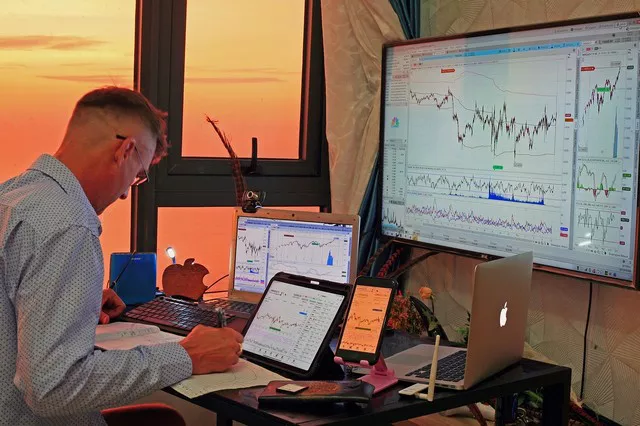Futures exchanges are crucial components of the global financial system, providing a platform for the trading of standardized futures contracts. These exchanges facilitate price discovery, risk management, and market liquidity, attracting participants from various sectors. In this article, we will provide an in-depth overview of futures exchanges, including their functions, structure, key players, and regulatory framework. By the end, you will have a comprehensive understanding of the important role that futures exchanges play in the financial markets.
Functions of Futures Exchanges
Price Discovery:
Futures exchanges serve as robust marketplaces where buyers and sellers converge to determine the prices of underlying assets.
The transparent and competitive nature of futures trading allows for efficient price discovery based on supply and demand dynamics.
The prices established on futures exchanges often serve as benchmarks for related cash markets.
Risk Management:
Futures exchanges provide participants with a means to hedge against price volatility and manage risk exposure.
Producers, consumers, and investors can utilize futures contracts to mitigate potential losses resulting from adverse price movements.
Hedging on futures exchanges helps stabilize cash market prices and provides stability to market participants.
Market Liquidity:
Futures exchanges create a centralized marketplace that fosters liquidity by attracting a wide range of market participants.
The availability of buyers and sellers at any given time enhances the ease of executing trades, even in large contract sizes.
Market liquidity on futures exchanges is essential for efficient price discovery and reducing transaction costs.
Structure of Futures Exchanges
Exchange Platforms:
Futures exchanges operate through electronic trading platforms that facilitate the matching of buy and sell orders.
These platforms provide real-time market data, order execution, and trade confirmations to market participants.
Some prominent futures exchanges include the Chicago Mercantile Exchange (CME), Intercontinental Exchange (ICE), and Eurex.
Clearinghouses:
Clearinghouses act as intermediaries between buyers and sellers, ensuring the performance and settlement of futures contracts.
They guarantee the financial integrity of trades, manage margin requirements, and provide risk management services.
Clearinghouses play a crucial role in reducing counterparty risk and maintaining market stability.
Contract Specifications:
Futures exchanges define contract specifications, including the underlying asset, contract size, tick size, and delivery or settlement terms.
These standardized specifications allow for fungibility and ensure uniformity in trading across participants.
Contract specifications may vary across different futures exchanges and asset classes.
Key Participants in Futures Exchanges
Speculators:
Speculators seek to profit from price fluctuations in futures contracts without having an underlying interest in the physical commodity.
They assume price risk and provide liquidity to the market by taking on positions based on their market expectations.
Speculators include individual traders, hedge funds, and institutional investors.
Hedgers:
Hedgers are market participants who use futures contracts to manage or mitigate price risk associated with their underlying assets.
Producers, such as farmers or mining companies, use futures contracts to lock in prices and protect against adverse price movements.
Consumers, such as airlines or manufacturers, hedge against price volatility by locking in future purchase prices.
Market Makers and Floor Traders:
Market makers are individuals or firms that provide liquidity by continuously quoting bid and ask prices for futures contracts.
Floor traders, historically present on trading floors, execute trades on behalf of themselves or their clients. c. Their participation ensures the smooth functioning of the market and improves liquidity.
Regulatory Framework for Futures Exchanges
Exchange Regulation:
Futures exchanges are subject to oversight by regulatory bodies, such as the Commodity Futures Trading Commission (CFTC) in the United States.
These regulators ensure fair and orderly markets, prevent market manipulation, and enforce compliance with trading rules.
Exchanges must maintain robust surveillance systems and impose penalties for any violations.
Investor Protection:
Regulatory frameworks aim to safeguard the interests of investors and ensure transparency in futures trading.
Investor protection measures include disclosure requirements, anti-fraud provisions, and safeguards against insider trading.
Regulatory bodies work to foster investor confidence and maintain the integrity of futures markets.
International Coordination:
Futures exchanges often collaborate with international counterparts to promote global regulatory standards and harmonization.
International cooperation helps facilitate cross-border trading, enhances market transparency, and addresses regulatory arbitrage.
Bodies like the International Organization of Securities Commissions (IOSCO) play a vital role in facilitating this coordination.
Conclusion
Futures exchanges form the backbone of global derivatives trading, providing a platform for price discovery, risk management, and market liquidity. By understanding their functions, structure, key participants, and regulatory framework, investors can make informed decisions and effectively navigate these markets. The continuous evolution of futures exchanges, driven by technological advancements and regulatory reforms, underscores their importance in shaping the financial landscape.


